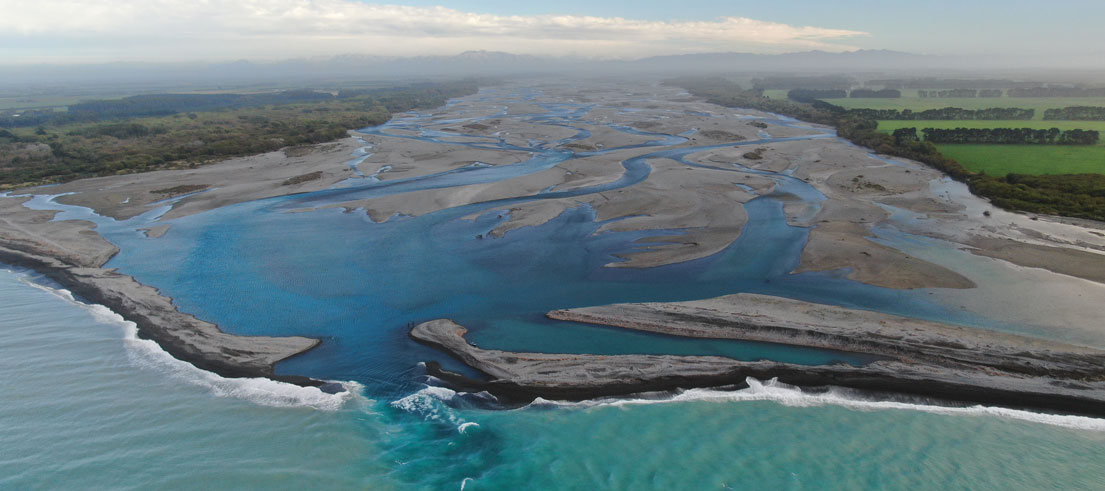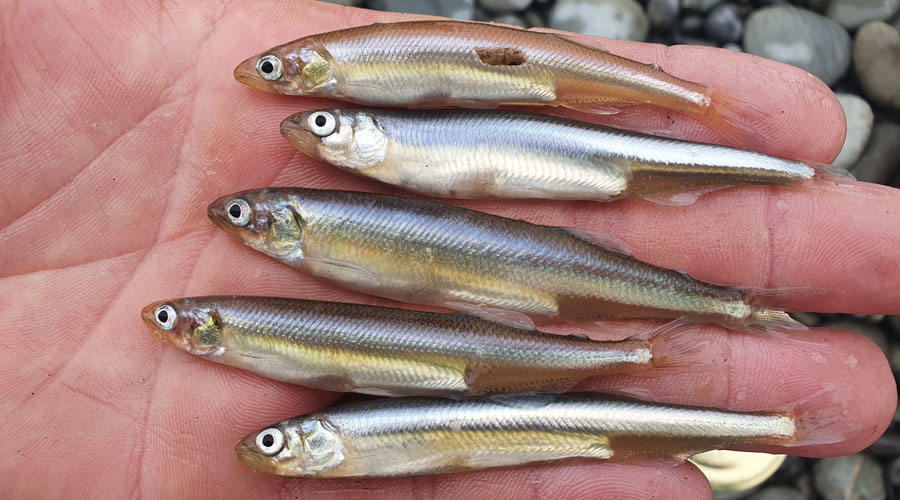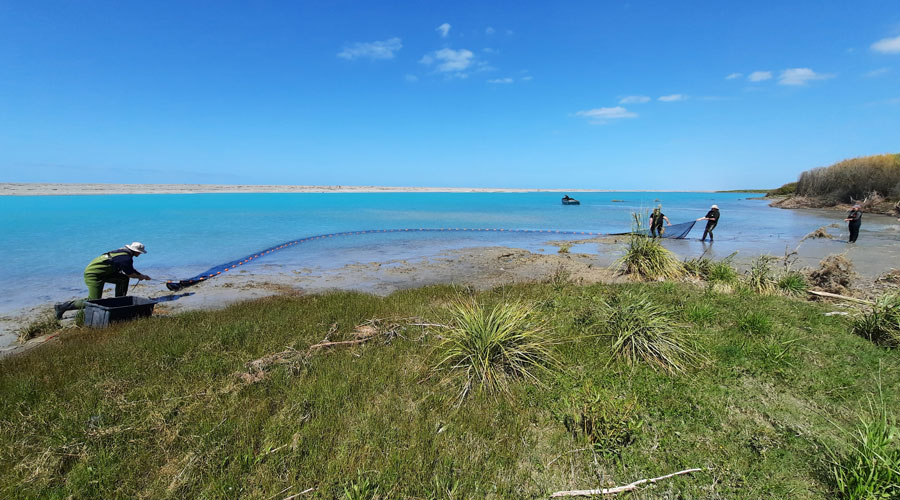
New reports paint picture of declining fish populations in Canterbury rivers
We have published two new reports into fish communities, documenting reductions in the abundance of several key species.
These reports reinforce observations from river users, and a NIWA report highlights that more research is needed into the drivers of changes in fish communities.
A vital ecosystem
Braided river hāpua are dynamic coastal freshwater lagoons that change frequently in response to river flows and ocean conditions. They are highly valued not only for their biodiversity and ecosystem functions, but also because of their cultural and recreational importance.
Between November 2020 and February 2021, we conducted fish surveys on the Rakaia, Rangitata and Hakatere/Ashburton hāpua.
That was followed by fortnightly surveys of the Rakaia Hāpua fish community between October 2021 and March 2022.
The surveys were designed to improve our understanding of the health of hāpua ecosystems, which is poorly understood.
Fewer, smaller fish found
We found fewer Stokell’s smelt, īnanga and Chinook salmon compared to historic surveys conducted on the Rakaia hāpua 40 years earlier. Greater numbers of yellow-eye mullet, common smelt and common bully were found.
Common smelt, īnanga, black flounder and common bully were generally smaller in length relative to 1980/81 populations which had more adult and large fish. Stokell’s smelt were by far the most dominant species present during summer 1980/81, whereas our latest surveys showed that they now form a small fraction of the overall hāpua fish community.
Chief Scientist Fiona Shanhun says that survey results back up anecdotal evidence from anglers and other river users.
“Many of the fish population changes we’ve observed are likely to be symptomatic of changes to environments where these migratory fish live,” Shanhun says.
“As these species spend their time between ocean and freshwater environments, returning to rivers to spawn, there are a range of factors that can affect their success.”
More work needed to identify causes
There are a range of interactions between climate change and land and water use pressures on the Rakaia and neighbouring river catchments which may affect hāpua fish communities. To support our understanding, we commissioned NIWA to report on the potential causes of hāpua fish population decline, particularly Stokell’s smelt.
The NIWA report highlighted that changes in ocean conditions are likely to be a significant driver causing a decline in the survival rates of migratory fish, including Stokell’s smelt larvae.
The NIWA report also considered rising sea temperatures, changes to crucial migration pathways, chronic environmental stress, increased predator numbers, competition and disease as possible factors, and recommended that more research be undertaken to identify spawning sites in hāpua and understand the distribution, growth, and diet of larvae at sea.
Read the reports
- Fish communities of the Rakaia Hapua: a comparison with historical survey data, 1980/81 - 2021/22 ( PDF file, 8.44MB)
- Fish community surveys of Canterbury Hapua 2020/21 (PDF file, 5.4MB)
- Potential drivers of the decline of hapua fish populations, report prepared by NIWA, Hickford (2022) (PDF file, 840.6KB)
- Perceptions of change - Recording observations over decades for Canterbury hapua, NIWA report (PDF file, 1.17MB)


